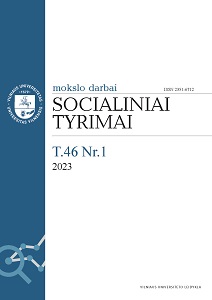Mažųjų bendrijų ir labai mažų įmonių finansinių ataskaitų reglamentavimo palyginamoji analizė
Regulation of Financial Statements of Small Partnerships and Micro-enterprises: Comparative Analysis
Author(s): Milda Kvekšienė, Lina Striaukaitė, Deimantė KuzminskaitėSubject(s): Business Economy / Management, Micro-Economics, Accounting - Business Administration
Published by: Vilniaus Universiteto Leidykla
Keywords: set of financial statements; micro-enterprises; small partnership;
Summary/Abstract: EU Directive 2013/34/EU was adopted to reduce the administrative burden on small businesses. By transposing the provisions of the Accounting Directive into Lithuanian legislation: the Law on Financial Accounting, the Law on Corporate Financial Reporting, and the Business Accounting Standards, micro-enterprises have had their administrative burden reduced by simplified financial reporting requirements. A 2018 study by the Ministry of Finance of the Republic of Lithuania states that the intended benefits have not been achieved due to a lack of clarity in the legal framework, which affects the quality of the preparation of financial statements. This study did not take into account the fact that both: the forms of financial statements and the accounting requirements for micro-enterprises with limited liability differ according to legal form. The wide range of financial statement sets leads to the incomparability of the financial statements data. It is therefore essential to analyze the current regulation of the financial statements of small partnerships and micro-enterprises and consequently to provide recommendations for adjustments and standardization of the content of financial statements. The objective of this study is to carry out a comparative analysis of the regulatory framework for the financial statements of small partnerships and micro-enterprises. To back the development of the financial reporting model, data from the financial statement sets of 26 micro-enterprises were used. By standardizing regulation and producing standardized accounts, businesses would save on information resource costs. Furthermore, the uniform content of the financial statements would allow for the comparability of information. It is recommended that the balance sheet should be more summarised in terms of fixed assets and equity, while current assets should be presented in more detail. In the income statement, it is suggested that expenses be presented in a combined way: by type and purpose, detailing the cost of the sales item.
Journal: Socialiniai tyrimai
- Issue Year: 46/2023
- Issue No: 1
- Page Range: 8-23
- Page Count: 16
- Language: Lithuanian

